MXA RACE TEST: 2019 TM 300MX TWO-STROKE
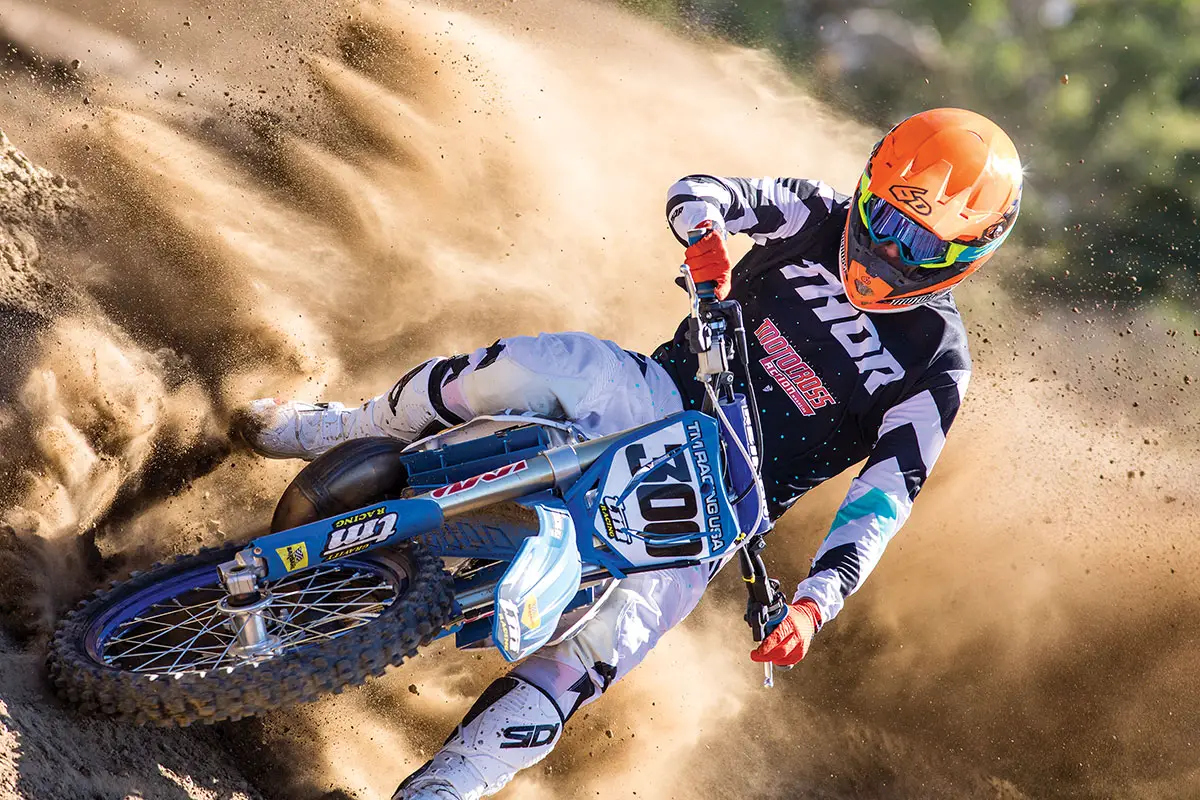
Q: IS THE 2019 TM 300MX BETTER THAN THE 2018 TM 300MX?
A: To be honest, we haven’t tested a bone-stock TM 300MX two-stroke since 2011. That doesn’t mean that we haven’t tested TM 300MXs. We have, but since 2011, TM importer Ralf Schmidt has built us a potpourri of exotic TM 300MX project bikes. Why has Ralf been giving us fully modded TM300MXs instead of production models? Ralf wants to have his finger on the pulse of the American market, so he builds modified TM 300MXs in an attempt to find out what the Italian factory needs to change to suit American motocross racers. What he learns, he reports back to TM Italy.
Since Ralf moved from Holland to America to take over TM’s operations, he has learned that American motocross is different from European motocross. What’s different? A lot. Let’s start with the tracks. Ralf discovered that European tracks aren’t groomed to the level of American tracks. European tracks don’t have the doubles and triples that litter most American tracks. European tracks are smaller and tighter. European riders value smooth power delivery, while American riders want an aggressive midrange powerband.  The 2019 TM 300MX has a four-stroke feel to it that gets the power to the ground.
The 2019 TM 300MX has a four-stroke feel to it that gets the power to the ground.
TM is an Italian boutique builder. Over the years, its interest in the American market has been minimal, largely because TM only produces about 1200 bikes a year. Its first priority is to satisfy the demands of its largest customer base by making bikes that work better on European tracks. As Ralf found out, European bike setup is very different from what American riders want. Since the majority of TMs are sold in Europe, the company hasn’t had much incentive to pay attention to U.S. riders. All that is about to change.
The kicker is that TM is going to invest in a larger facility to increase its production with an eye towards growth. And, it is no secret that if an off-road motorcycle brand wants to sell more bikes, it has to sell them to Americans. Therefore, as Ralf has found out, TM needs to Americanize its bikes. So, Ralf builds MXA project bikes to test different setups. We tell him what we don’t like and he tells the Italians, which brings us to the all-new 2019 TM 300MX production bike. A vastly better bike than we tested in 2011. 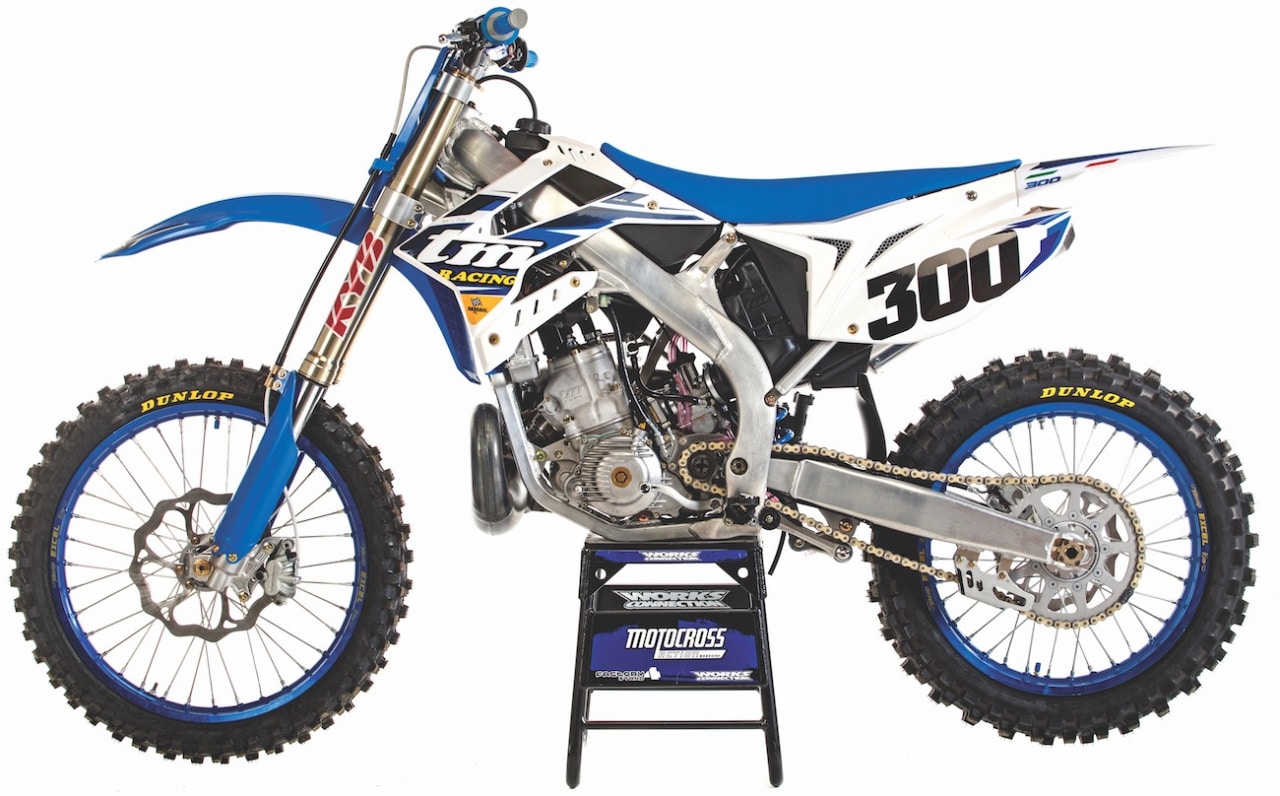
Q: WHAT HAS CHANGED ON THE 2019 TM 300MX FROM THE 2018 MODEL?
A: It is easier to tell you what hasn’t changed on the 2019 TM 300MX. For 2019, the engine parts that carry over from the 2018 model are the countershaft sprocket, clutch, piston and connecting rod. Every other part on the engine is different. Here are a few highlights of the all-new bike.
(1) Gearbox. The transmission is now a five-speed instead of a six-speed, and the gear ratios are completely different.
(2) Counterbalancer. A counterbalancer shaft, similar to the one in the KTM 250SX, has been developed to minimize vibration.
(3) Electric start. The 300MX has both a kickstart and electric starter.
(4) Electronic power valve. The electronic power valve is now operated with a push rod rather than servo cables.
(5) Offset. The triple-clamp offset has been changed from 20 to 23mm.
(6) Weight. The electric start only added 2 pounds after TM made the frame and other components lighter.
(7) Frame. The frame is all new, and the engine has been moved rearward to make room for the electric starter that is mounted on the front of the engine (below the exhaust port).
(8) Suspension. The same Kayaba forks and TM shock are used with revised valving.

Q: CAN THE TM 300MX BE TURNED INTO A 250MX AND VICE VERSA?
A: No, but for good reason. Unlike KTM, who makes its 250cc and 300cc two-strokes with the same stroke, TM makes completely different bores and strokes for both. This allows TM to make an engines specifically tuned to both the 250cc and 300cc demands.
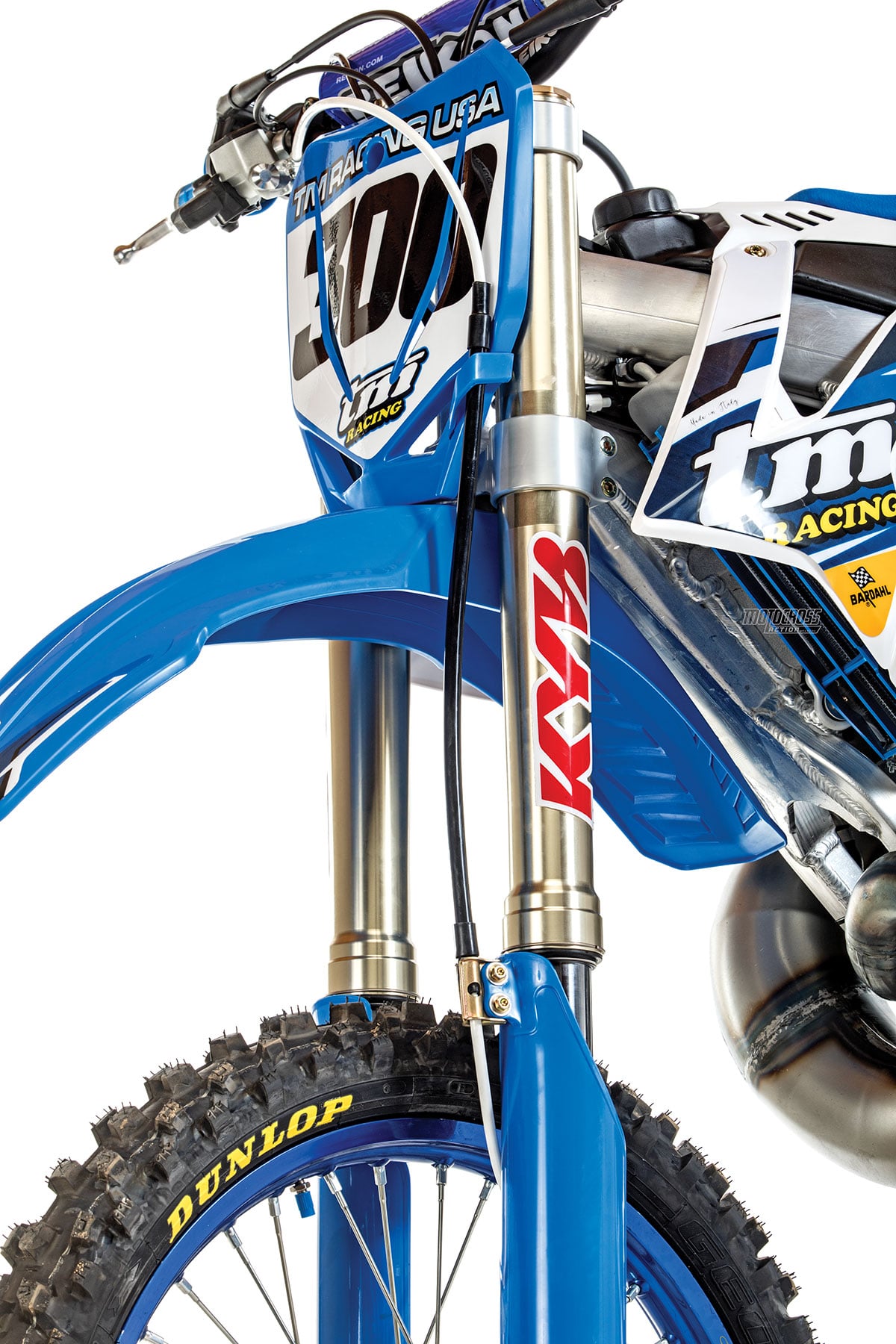
Q: WHAT DID WE THINK OF THE TM 300MX POWERPLANT?
A: In a few words, it feels like a free-revving tractor. It hooked up like a thumper and had very little engine braking, even by two-stroke standards. The power off the bottom was light and snappy. The clutch didn’t have to be utilized to get the bike moving out of corners, nor did it need to be used to keep the front wheel planted on the ground. The feel of the 2019 TM 300MX powerplant reminded us of when we put a heavier flywheel on a YZ250.
The downside of the TM 300MX’s powerplant is its short powerband. Amazingly, it’s even shorter than the explosive power of the 2019 KTM 250SX. The KTM 250SX hits really hard down low and then signs off at around 8500 rpm instead of the traditional 9500 rpm. The TM 300MX delivers mostly bottom and midrange power and not much on top. This type of power suits short-shifters very well. It took our testers some time to get used to the torquey engine, as we had to ride it differently from the way we would a normal smoker. Once they got used to the bike, the testers’ complaints died down, but a little extra top-end rev would be warmly welcomed on both the TM and KTM. The Yamaha YZ250 shines above the TM’s and KTM’s rev limiters.
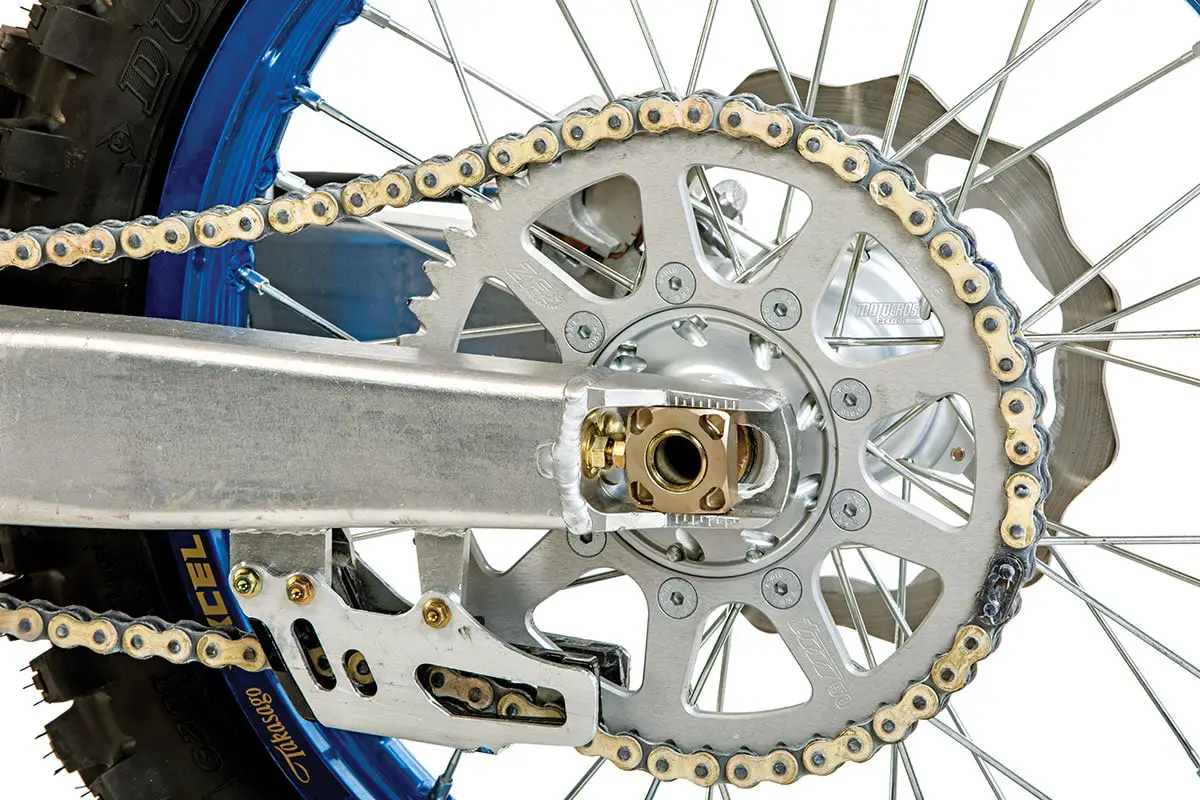
Q: CAN THE POWERBAND BE BROADENED?
A: The simplest thing to do is gear the TM 300MX taller. This will lengthen the gap between shifts. Stock gearing is a super-low 13/50. This gearing combo is actually a fairly common dirt bike sprocket setup, but what makes it feel too low are the internal gear ratios. We had a fairly good idea of how many teeth we needed to bring the TM gearbox up to snuff and went straight to a taller 14-tooth countershaft sprocket. This allowed us to choose between a 48-, 49- and 50-tooth rear sprocket to suit the rider or the track layout. Gearing will not keep the powerband from falling off, but it will delay it.
The good news is that TM’s 250MX and 300MX two-strokes will come with free software that will work in your personal laptop to change the mapping curve, which will potentially allow you to keep the power from signing off so early. The downfall? It won’t be available until the 2020 models arrive.
TM is also working with Pro Circuit to make a pipe and silencer that will spread the power out. It is available now.
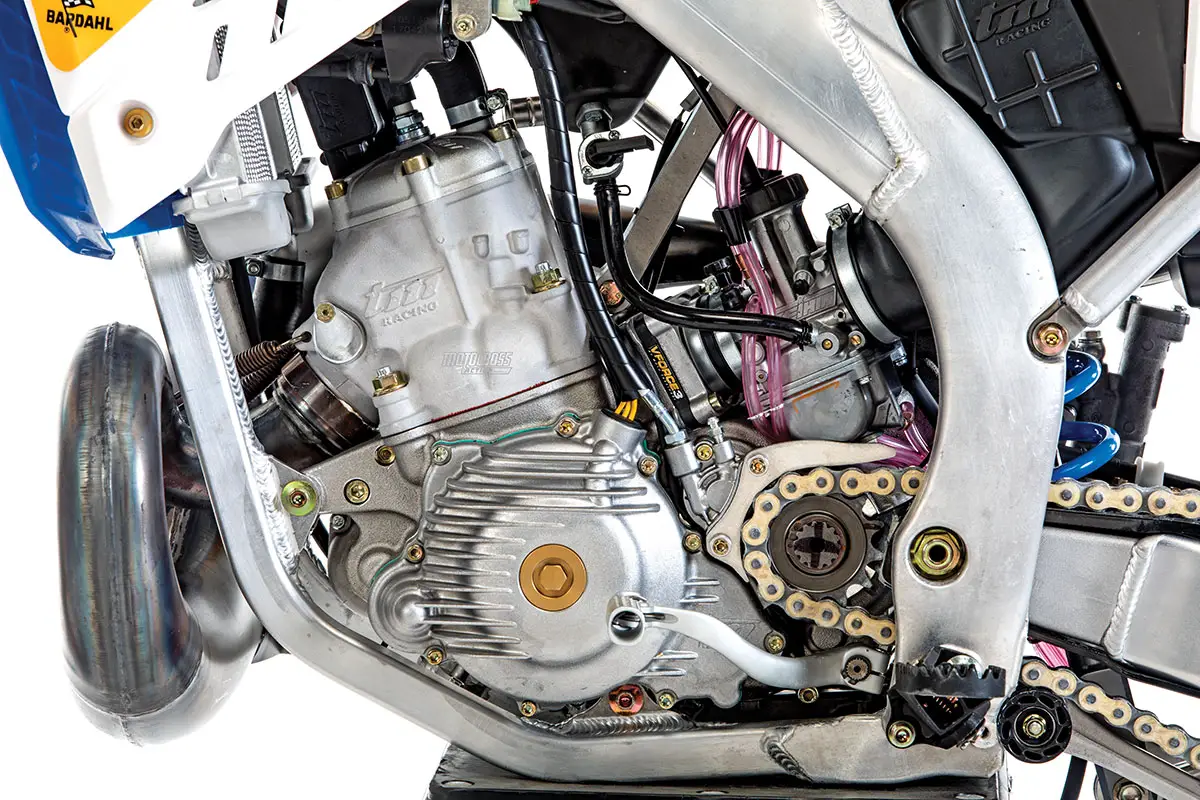
Q: HOW WAS THE KAYABA SUSPENSION?
A: TM finally started listening to our complaints. Well, actually, we complained to Ralf, made him change the stuff we didn’t like and then he complained to TM. On almost every TM we have tested in recent years, the rear of the bike sat too high. This stinkbug stance made the bike feel unbalanced and put too much weight on the front wheel. To balance out the chassis, we had to run as much as 110mm of sag. The 2019 TM 300MX was markedly lower in the rear, and we set the race sag at 105mm. This made the bike easy to set up and offered a more enjoyable ride on the track.
The Kayaba forks and TM shock worked well together. TM’s version of Kayaba SSS forks used to have a harsh initial feel, followed by bottoming in big bumps. We expect Kayaba SSS forks to work (based on 13 years of Yamaha experience). In the past, the TM version was night and day different from the Yamaha version. Thankfully, the 2019 TM forks get progressively stiffer as they go through their stroke. No more harsh spots. But, let’s not get ahead of ourselves. Yamaha’s SSS settings are superior to everything on the market. The TM’s Kayaba forks still need some work, but they are a step in the right direction.
Our test riders didn’t have any issues with the TM shock. It did its job well and worked in unison with the forks. Every test rider went softer on low-speed compression and stiffer on the high-speed compression to find the comfort he wanted.
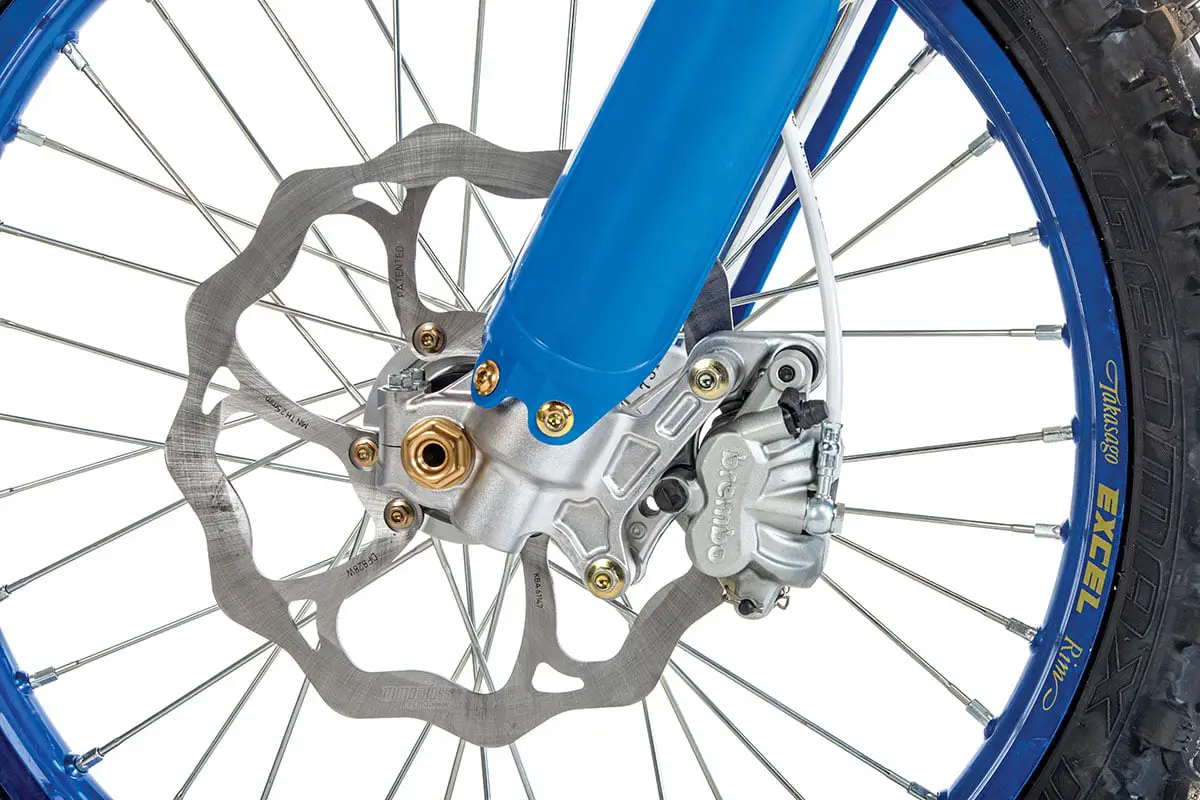
Q: WHAT DID WE HATE?
A: The hate list:
(1) Rear sprocket bolts. Nine sprocket bolts? No! Not even TM’s factory race team runs its hubs with nine sprocket bolts. They take three out. The plus side of the nine-bolt pattern is that the sprocket will never fall off.
(2) Maps. The TM offers two maps to choose from via an easy-access, handlebar-mounted toggle switch. We couldn’t feel a difference between the two maps, though.
(3) Weight. TM should dropkick the kickstarter to save a few pounds. If TM is worried about killing the battery, the engineers need to find a better battery.
(4) Front fender. The front fender hits the front tire on hard landings. It makes an irritating racket. We shimmed the front of the fender up to stop it from hitting but think that TM should do this at the factory.
(5) Gearing. Standard gearing is 13/50, which is too low. Light riders like a 14/49 combo, whereas the rest liked 14/50.

Q: WHAT DID WE LIKE?
A: The like list:
(1) Brakes. The Brembo brakes with 270mm Galfer rotors are amazing.
(2) Wheels. TMs have had blue Takasago Excel rims for years, just in case you think TM is copying Yamaha. We love the polished spool hubs.
(3) Suspension. The Kayaba SSS forks and TM shock work in unison, and since the forks are Kayaba SSS components, any suspension guru can make them as good as Yamaha’s version.
(4) Hydraulic clutch. The self-adjusting hydraulic clutch is great.
(5) Handling. This is a great handling bike. It can turn on a dime and has good straight-line stability.
(6) Balance. After years of having to run super-low sag and cut down the subframe to bring the bike into balance, we think the TM 300MX now offers a good balance at a normal sag height.
(7) Bars. Everyone liked the oversize Reikon bar bend.
Q: WHAT DO WE REALLY THINK?
A: TM’s goal is to double its production numbers from 1200 units to 2400 units a year. How serious is TM? TM put its Grand Prix race team on hold to save the money to buy the equipment needed to up its production numbers. TM knows that the U.S. motocross market is the biggest in the world, and to break into it they need to build production bikes that American consumers will like. Dutchman Ralf Schmidt is the point man in the Americanization of the most Italian of all motocross bikes. Luckily, TM has a small European brand that suffered the same growing pains a few years ago that they can learn from—that company was KTM. TM still has some work to do to come up with the perfect American template, but the company has made more progress in 2019 than in the 10 years before that.
MXA’S 2019 TM 300MX SETUP SPECS
This is how we set up our 2019 TM 300MX for racing. We offer it as a guide to help you find your own sweet spot.
KAYABA SSS FORK SETTINGS
For hardcore racing, we ran this setup on the 2019 TM 300MX (stock clickers are in parentheses):
Spring rate: 4.6 kg/mm
Compression: 8 clicks out (6 clicks out)
Rebound: 10 clicks out (12 clicks out)
Fork height: 5mm up
Notes: The Kayaba SSS fork are on the harsh side. Dropping the oil height by 10cc increments can soften the feel.
TM SHOCK SETTINGS
For hard-core racing, we ran this setup on the 2019 TM 300MX (stock clickers are in parentheses):
Spring rate: 4.8 kg/mm
Race sag: 105mm
Hi-compression: 1 turn out (1 1/2 turns out)
Lo-compression: 8 clicks out (12 clicks out)
Rebound: 12 clicks out (10 clicks out)
Notes: Unlike past TMs, the balance of the bike is spot-on with 105mm of sag. This makes the bike much easier to set up.


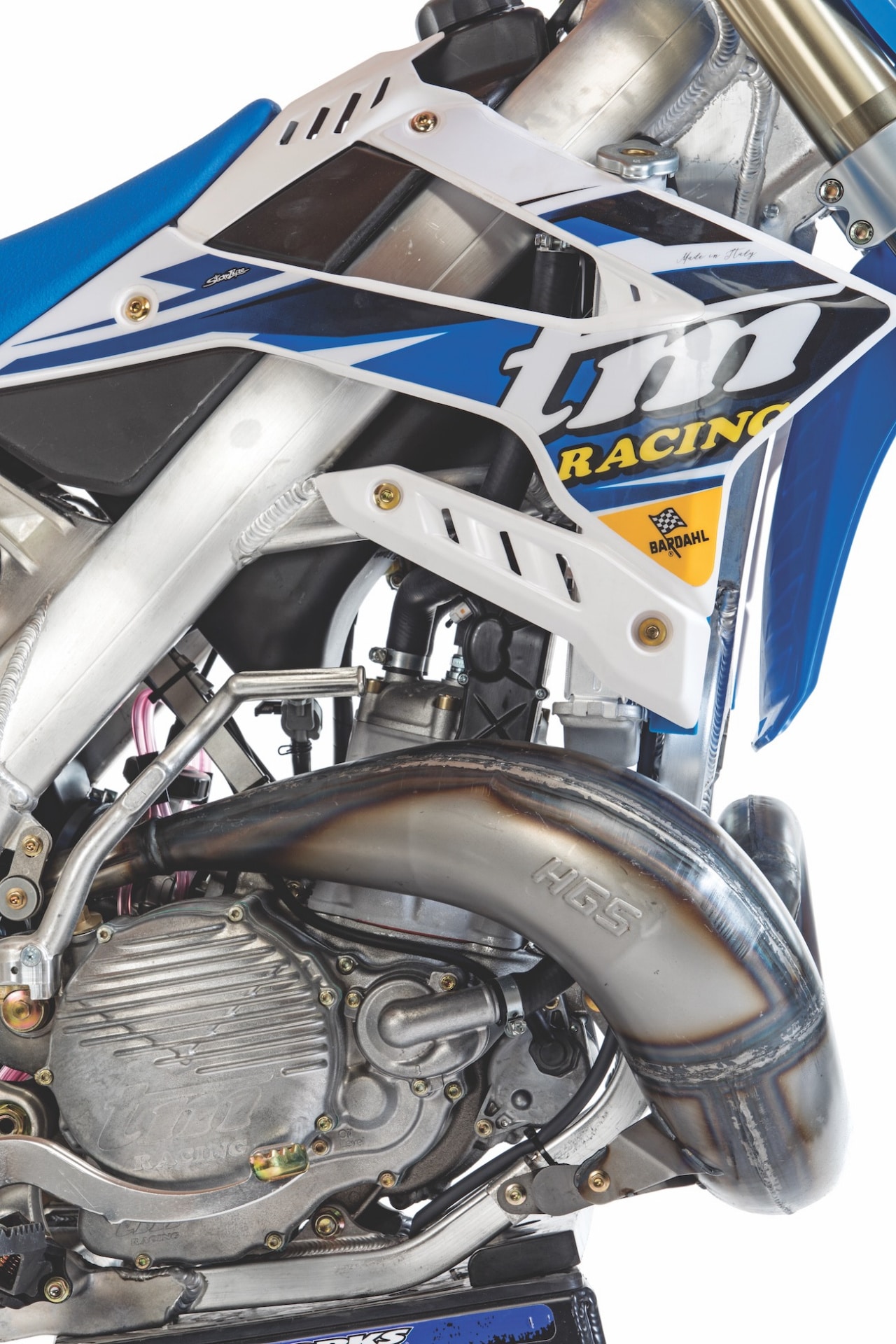
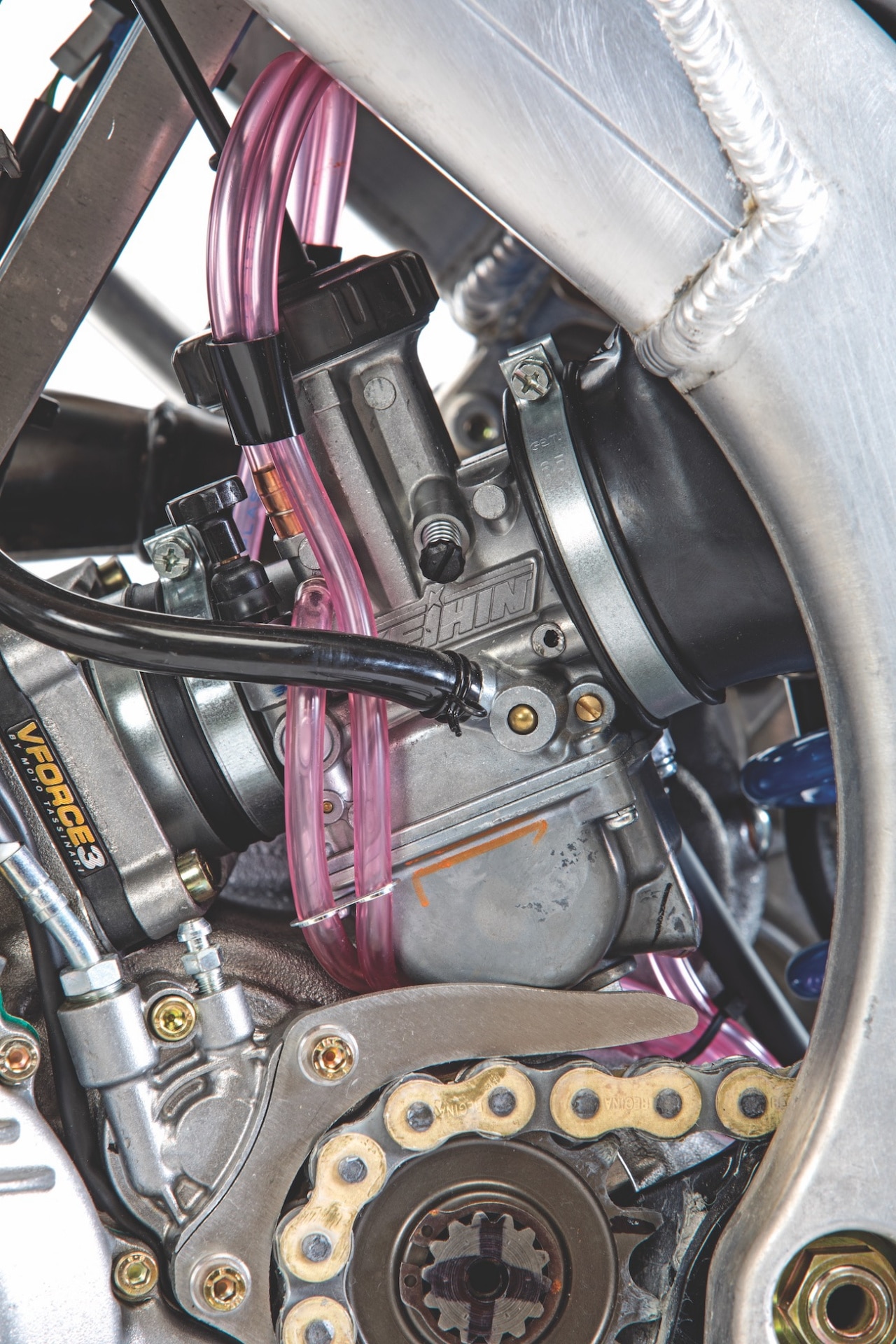

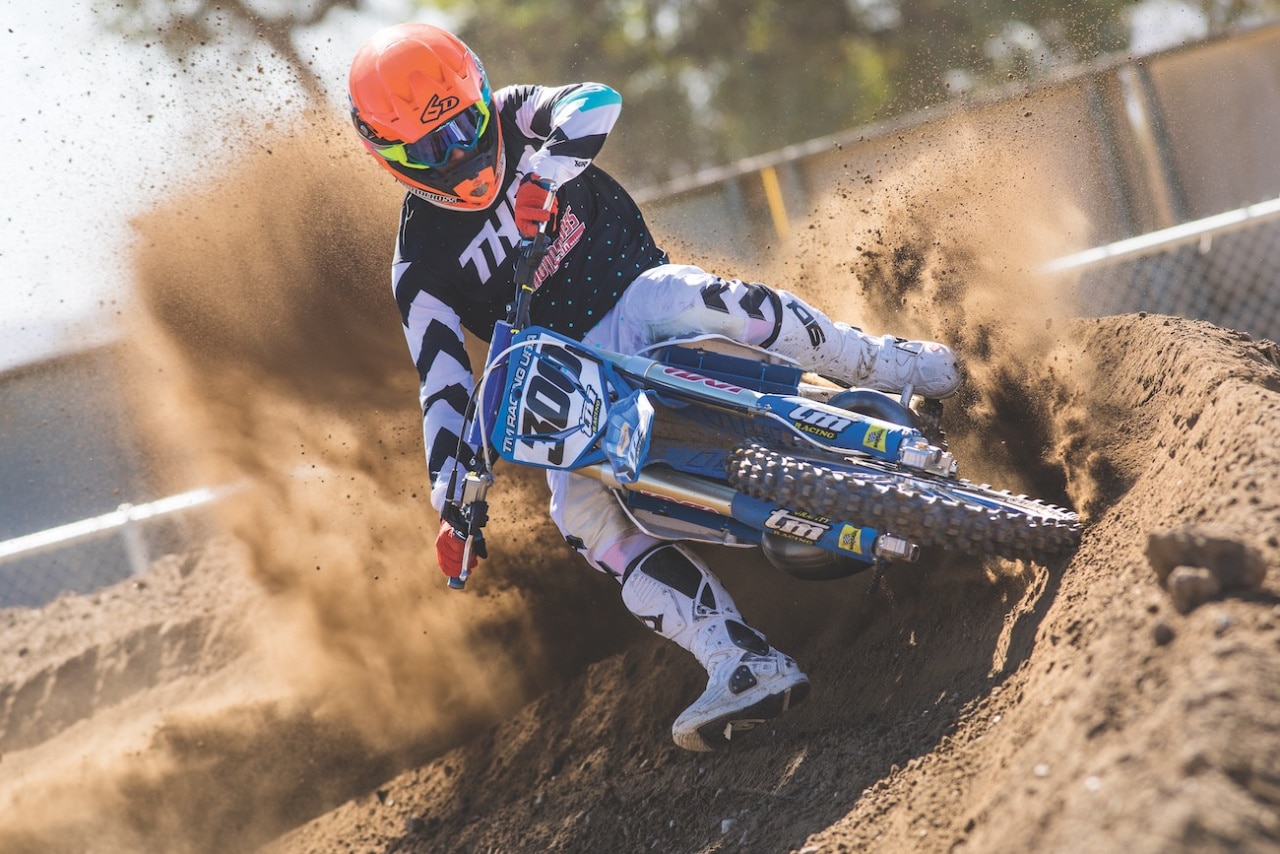

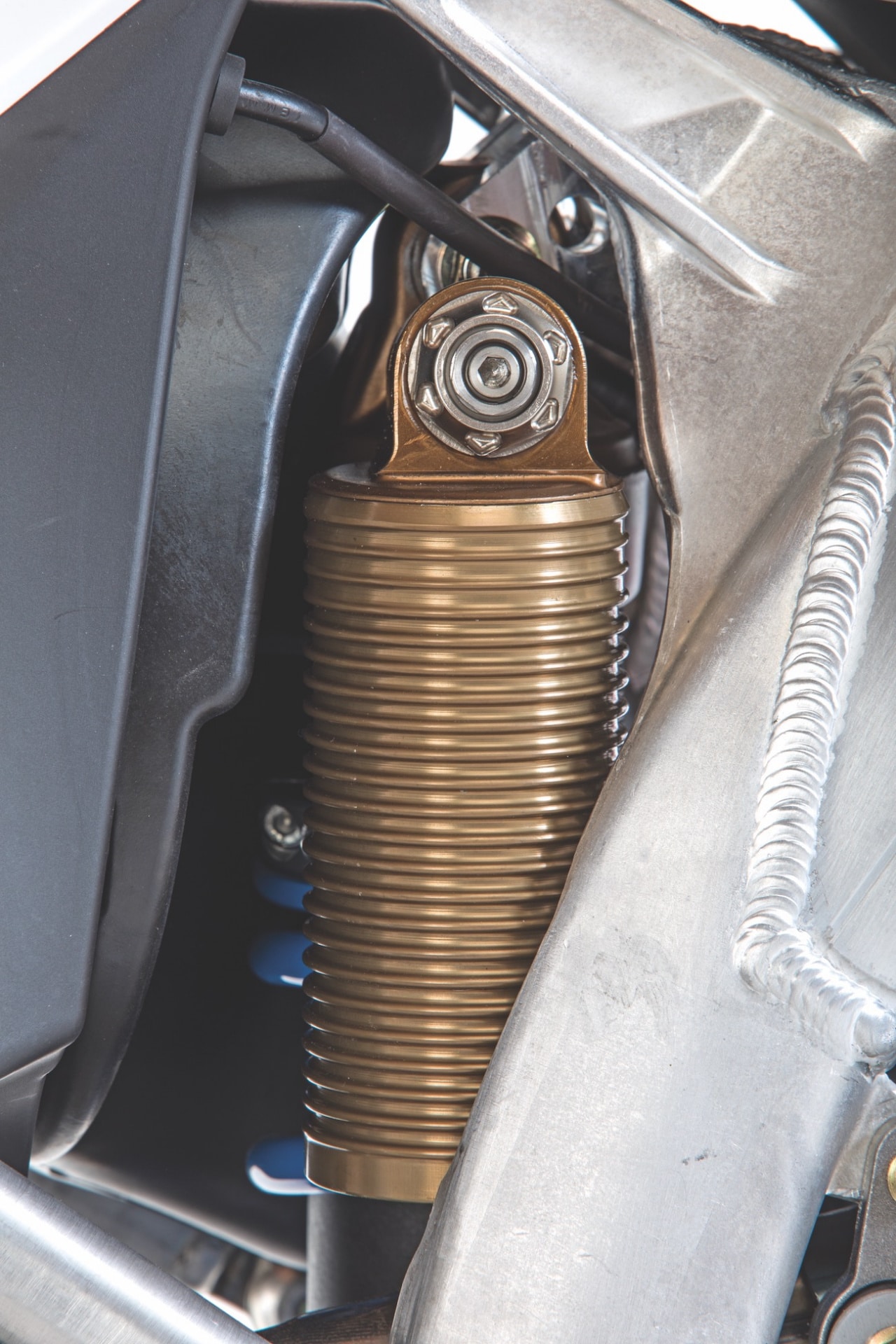

Comments are closed.